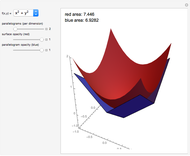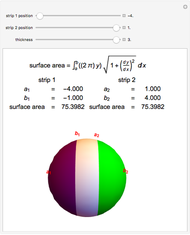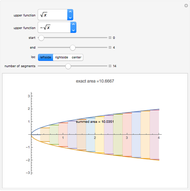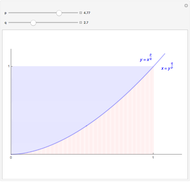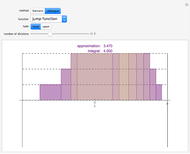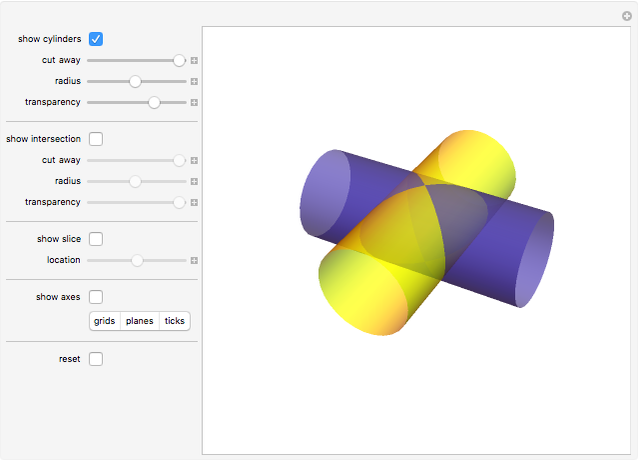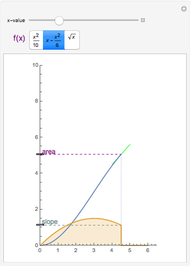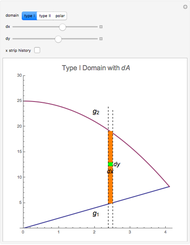Differential Element dA
Initializing live version

Requires a Wolfram Notebook System
Interact on desktop, mobile and cloud with the free Wolfram Player or other Wolfram Language products.
Integration over the region in the plane between the graphs of two continuous functions is performed by setting up type I or type II domains in Cartesian coordinates or as a polar domain in polar coordinates. Double integrals require a student to visualize the differential element of area covering the desired domain of integration. Using an integrand function of value 1 everywhere generates a double integral whose value is the area of the domain.
[more]
Contributed by: Harry Bishop (April 2011)
Open content licensed under CC BY-NC-SA
Snapshots
Details
Permanent Citation




































